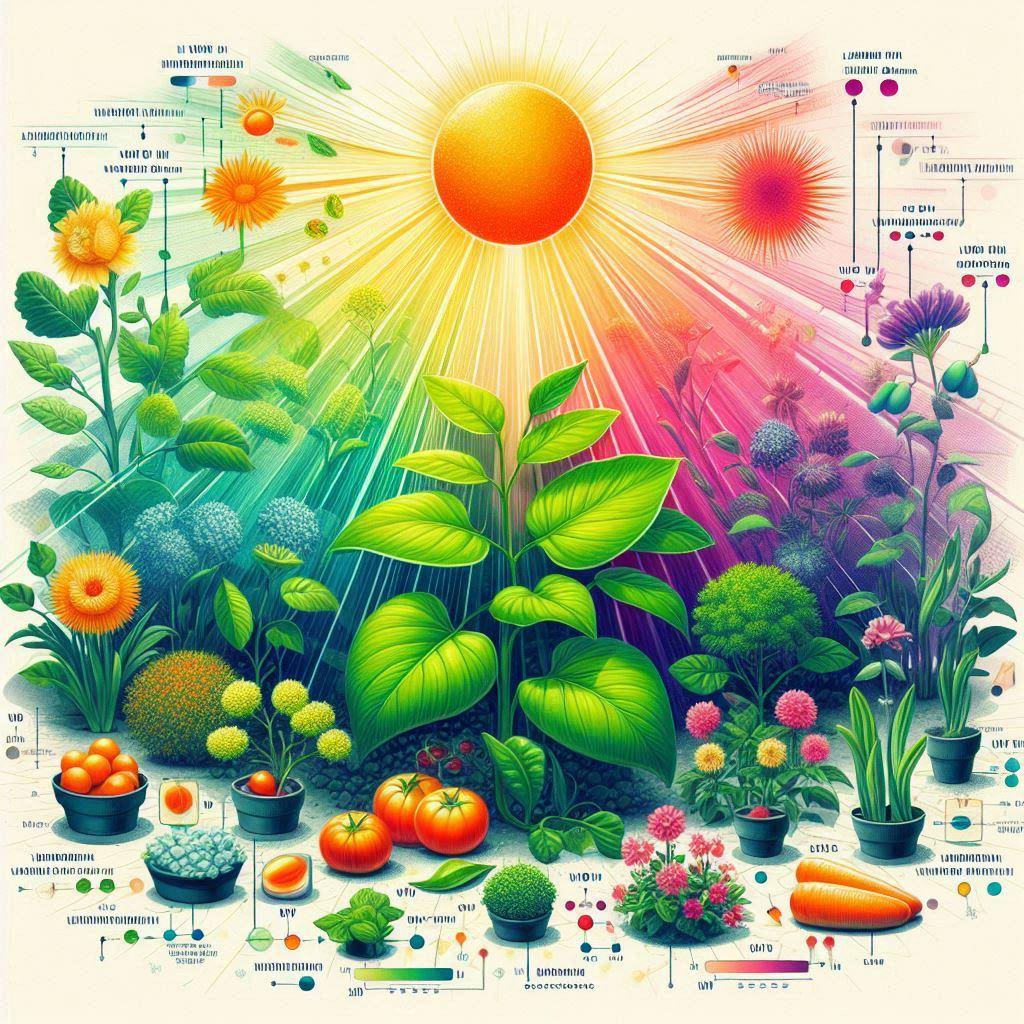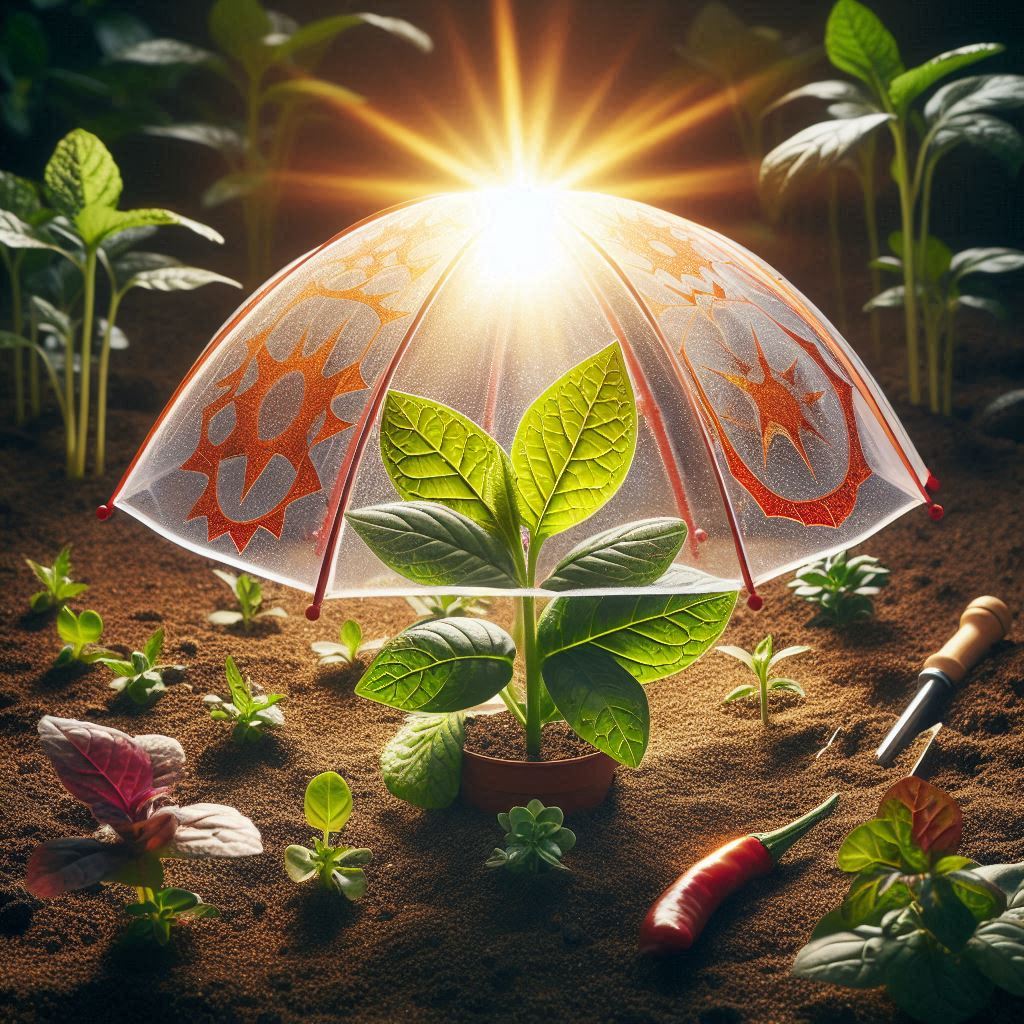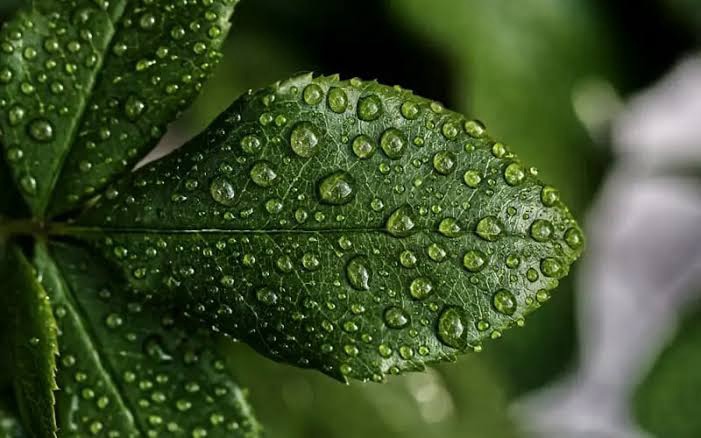Plants rely on sunlight for photosynthesis, which is crucial for their survival and growth. However, sunlight also contains ultraviolet (UV) radiation, which is divided into three categories based on wavelength: UVA (320–400 nm), UVB (280–320 nm), and UVC (100–280 nm). While UVA is the least harmful and is commonly experienced by plants under natural sunlight, UVB and UVC have more profound effects, both beneficial and detrimental. Understanding how UVB and UVC radiation affect plant growth is essential for horticulture, agriculture, and ecological balance.
UVB Radiation and Its Impact on Plants
UVB radiation, though partially filtered by the Earth’s atmosphere, still reaches the surface and plays a significant role in plant development. While excessive UVB exposure can be harmful, moderate levels can trigger beneficial adaptations that enhance plant survival, resilience, and productivity. One of the primary ways UVB influences plants is by inducing stress responses, prompting them to activate defense mechanisms that help mitigate potential damage. Among these responses is the increased production of secondary metabolites, including flavonoids, phenolic compounds, and other antioxidants. These compounds act as natural sunscreens, absorbing and dissipating UV radiation before it can penetrate deeper into plant tissues. Flavonoids, for example, accumulate in the outer cell layers of leaves, forming a protective barrier that reduces cellular damage while also contributing to the plant’s coloration and overall physiological functions.
Beyond protection, UVB exposure can enhance plant traits that improve both survival and agricultural value. One such enhancement is the increase in anthocyanin production, which not only strengthens the plant’s ability to tolerate UV stress but also intensifies pigmentation, leading to more vibrant flowers, fruits, and leaves. This is particularly beneficial in ornamental plants and fruit-bearing crops, where richer coloration can increase market appeal. Moreover, UVB exposure has been found to elevate the production of phytoalexins and other antimicrobial compounds, boosting a plant’s natural resistance to bacterial and fungal pathogens. This improved immunity reduces the need for synthetic pesticides, promoting a more sustainable approach to agriculture. Some studies have even shown that controlled UVB application in greenhouses can decrease insect herbivory, as certain plant defenses triggered by UVB exposure deter pests from feeding.
However, excessive UVB radiation can have detrimental effects, particularly at high altitudes, in regions with thinning ozone layers, or in artificially manipulated environments where UV exposure is not carefully controlled. One of the primary risks of excessive UVB exposure is DNA damage. UVB photons have enough energy to alter the structure of DNA molecules, leading to mutations or disruptions in normal cellular processes. The formation of cyclobutane pyrimidine dimers (CPDs) is a significant consequence, as these abnormal chemical bonds between adjacent DNA bases prevent accurate replication and transcription. Although plants possess photoreactivation and nucleotide excision repair mechanisms to correct DNA damage, prolonged or intense UVB exposure can overwhelm these repair systems, leading to cell dysfunction, growth inhibition, or even programmed cell death (apoptosis).
In addition to genetic damage, high UVB levels negatively impact photosynthesis by altering chloroplast structure and function. Chlorophyll, the pigment responsible for capturing light energy, is particularly sensitive to UV-induced degradation. A decline in chlorophyll content translates to reduced photosynthetic efficiency, impairing a plant’s ability to convert light into chemical energy. This energy deficit slows down growth, reduces biomass accumulation, and may lead to chlorotic or necrotic leaf symptoms. Furthermore, UVB can damage photosynthetic proteins, such as those involved in the electron transport chain, disrupting the entire process of energy production.
Despite these risks, some plants have evolved structural adaptations to minimize UVB-induced stress. Species native to high-altitude or high-UV environments often develop thickened cuticles, which act as physical shields against radiation. Others produce a higher density of trichomes—small, hair-like structures on leaf surfaces—that scatter and reflect UV light, preventing excessive absorption. Additionally, certain plants can dynamically adjust their chloroplast orientation within cells to minimize direct UV exposure. These adaptations highlight the remarkable ability of plants to balance UV-induced stress with growth and survival.
Understanding how plants respond to UVB radiation is crucial for optimizing agricultural practices, especially in controlled environments such as greenhouses or vertical farms. While unregulated exposure can cause damage, strategic use of UVB supplementation can improve plant quality, enhance resistance to pests and diseases, and even extend shelf life in post-harvest storage. Ongoing research continues to explore how different species and cultivars react to UVB, aiming to develop targeted applications that maximize benefits while minimizing harmful effects. As climate change and ozone fluctuations alter natural UV levels, it becomes increasingly important to study plant-UV interactions to ensure sustainable crop production and ecosystem health in the future.
UVC Radiation and Its Effects on Plant Growth
Unlike UVB, which partially reaches the Earth’s surface, UVC radiation is almost entirely absorbed by the ozone layer and does not naturally occur in the environment. However, due to artificial sources such as germicidal lamps, industrial emissions, and ozone depletion, plants can sometimes be exposed to UVC radiation, leading to significant biological effects. UVC is the most energetic and damaging type of ultraviolet radiation, capable of breaking molecular bonds and causing extensive cellular and genetic damage. As a result, its impact on plant growth is often far more severe than that of UVB exposure.
One of the most detrimental effects of UVC radiation on plants is its ability to cause severe DNA damage. Unlike UVB, which primarily induces the formation of cyclobutane pyrimidine dimers (CPDs) that can sometimes be repaired by photoreactivation mechanisms, UVC can cause extensive DNA strand breaks and complex mutations that are often irreversible. The high-energy photons in UVC disrupt the stability of nucleic acids, leading to fragmentation of genetic material and cell cycle arrest. When plants are exposed to UVC for prolonged periods or at high intensities, cell death may occur due to an inability to repair the extensive genetic damage. This is why UVC is widely used for sterilization purposes—it effectively eradicates microorganisms by destroying their DNA, and the same destructive effect applies to plant cells when exposure is uncontrolled.
Physiologically, UVC exposure can significantly disrupt normal plant development. Seed germination rates often decline when seeds are subjected to UVC radiation, as the damage to embryonic cells prevents proper division and differentiation. Young seedlings exposed to UVC may experience stunted growth, reduced root elongation, and abnormal morphogenesis. Established plants subjected to prolonged UVC exposure often exhibit necrotic lesions, severe chlorosis, and wilting, as their cells struggle to maintain metabolic processes in the face of intense oxidative stress. Since UVC can also degrade proteins and lipids, essential cellular structures such as membranes, enzymes, and transport channels become compromised, leading to widespread tissue damage.
UVC radiation is particularly harmful to the photosynthetic machinery of plants. Unlike UVB, which can sometimes induce protective responses like flavonoid production, UVC primarily causes degradation of chlorophyll and other photosynthetic pigments. The destruction of these pigments impairs the plant’s ability to absorb and convert light energy into chemical energy, resulting in a sharp decline in photosynthetic efficiency. Furthermore, UVC can disrupt the integrity of thylakoid membranes within chloroplasts, affecting the electron transport chain and ATP synthesis. Without the ability to generate sufficient energy, plants become severely weakened, and prolonged exposure may lead to complete growth inhibition and death.
Another major consequence of UVC exposure is the induction of oxidative stress. UVC radiation stimulates the excessive production of reactive oxygen species (ROS), such as superoxide radicals and hydrogen peroxide, which can cause oxidative damage to cellular components. While plants possess antioxidant defense mechanisms, such as superoxide dismutase and catalase enzymes, to neutralize ROS, these defenses can become overwhelmed under high UVC exposure. As oxidative stress accumulates, cellular components such as proteins, lipids, and nucleic acids sustain irreversible damage, further contributing to cell death and overall plant deterioration.
While UVC is largely harmful to plants, researchers are exploring controlled applications of UVC radiation for agricultural benefits, particularly in pathogen control. Short, low-dose UVC treatments have been found to suppress fungal and bacterial infections on plant surfaces without leaving chemical residues. For example, UVC has been used to prevent post-harvest diseases in fruits and vegetables by reducing microbial contamination and delaying spoilage. However, precise dosage control is essential, as excessive UVC exposure can damage plant tissues instead of merely targeting pathogens. Some studies suggest that very brief UVC exposure may trigger mild stress responses that activate certain defense pathways in plants, though this effect is not well understood and remains an area of active research.
Ultimately, while UVC radiation is a powerful tool in sterilization and pathogen management, its effects on plant growth are largely destructive. Unlike UVB, which can sometimes be beneficial in moderate amounts, UVC primarily causes DNA damage, protein degradation, and severe impairment of photosynthesis. Plants have limited natural defenses against UVC, as they are not naturally exposed to it in their environments. As artificial UVC sources become more widespread in industrial and agricultural settings, understanding and regulating UVC exposure will be crucial in preventing unintended harm to plant life while harnessing its potential benefits for disease control.
Potential Agricultural Applications of UVB and UVC
UVB and UVC radiation, despite their potential harm, are being explored for various agricultural benefits, particularly in enhancing plant defenses and controlling pathogens. Controlled UVB exposure can stimulate the production of protective compounds like flavonoids and anthocyanins, improving resistance to pests while also enhancing crop color, taste, and nutritional value. Additionally, UVB can influence plant morphology, promoting compact growth and boosting photosynthetic efficiency under optimal conditions. UVC, known for its sterilizing properties, is being tested for disease management, effectively reducing fungal and bacterial infections on crops without the need for chemical pesticides. It is also being applied in post-harvest treatments to extend the shelf life of fruits and vegetables by preventing microbial contamination. Moreover, UVC is showing promise in seed sterilization, eliminating seed-borne pathogens and potentially improving germination rates. However, precise dosage control is essential, as excessive exposure to either type of UV radiation can damage DNA, hinder photosynthesis, and negatively impact plant health. As technology advances, UV-based treatments are being integrated into greenhouse systems and precision farming, offering eco-friendly alternatives to chemical pesticides and fungicides while enhancing crop resilience and food security in a changing climate.
Conclusion
Both UVB and UVC radiation influence plant growth, but their effects differ significantly. While UVB can be beneficial in moderate doses by stimulating protective responses and enhancing certain plant traits, excessive exposure can damage DNA, hinder photosynthesis, and reduce crop yields. UVC, on the other hand, is overwhelmingly harmful due to its high energy and potential to cause severe genetic damage. While researchers are exploring controlled applications of UV radiation in agriculture, careful management is essential to balance potential benefits with the risks of overexposure. Understanding these effects allows scientists and farmers to optimize plant growth while minimizing harmful impacts.
References
- Björn, L. O. (2008). Photobiology: The Science of Life and Light. Springer.
- Hollósy, F. (2002). “Effects of ultraviolet radiation on plant cells.” Micron, 33(2), 179-197.
- Jansen, M. A. K., Gaba, V., & Greenberg, B. M. (1998). “Higher plants and UV-B radiation: Balancing damage, repair and acclimation.” Trends in Plant Science, 3(4), 131-135.
- Wargent, J. J., & Jordan, B. R. (2013). “From ozone depletion to agriculture: Understanding the role of UV radiation in sustainable crop production.” New Phytologist, 197(4), 1058-1076.
- Kakani, V. G., Reddy, K. R., Zhao, D., & Sailaja, K. (2003). “Field crop responses to ultraviolet-B radiation: A review.” Agricultural and Forest Meteorology, 120(1-4), 191-218.
- Takahashi, A., Ohnishi, T., & Fujikawa, Y. (2004). “DNA damage response in plants: A new insight into UV resistance mechanisms.” Chromosoma, 113(1), 1-9.
- Esposito, S., Caruso, G., Armiero, A., & Fogliano, V. (2020). “UVC radiation for food safety and plant disease control: Benefits and limitations.” Frontiers in Plant Science, 11, 569738.
- Stapleton, A. E. (1992). “Ultraviolet radiation and plants: Burning questions.” The Plant Cell, 4(11), 1353-1358.
- Heisler, G. M., & Grant, R. H. (2000). “Ultraviolet radiation in urban ecosystems with consideration of effects on human health.” Urban Ecosystems, 4(3), 193-229.
- Ballaré, C. L., Caldwell, M. M., Flint, S. D., Robinson, S. A., & Bornman, J. F. (2011). “Effects of solar ultraviolet radiation on terrestrial ecosystems: Patterns, mechanisms, and interactions with climate change.” Photochemical & Photobiological Sciences, 10(2), 226-241.










